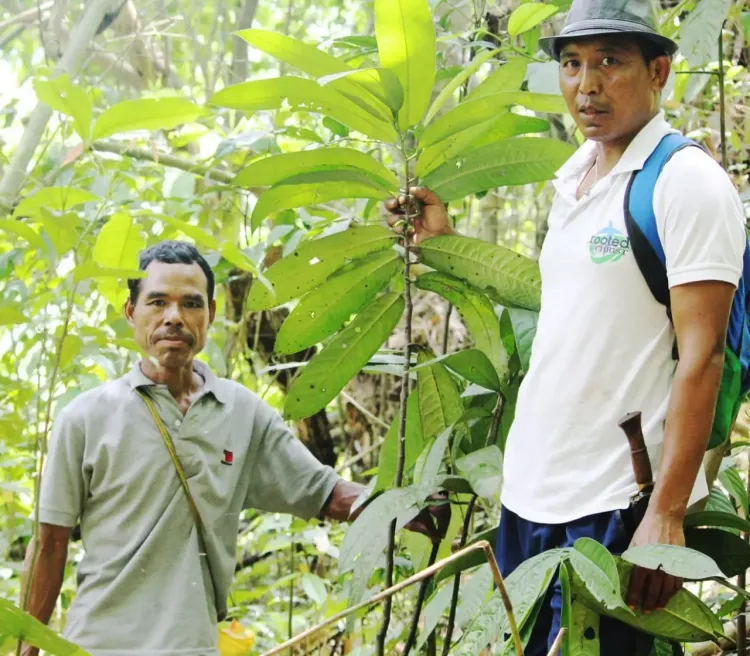What medicinal secrets of a rare Meghalaya plant have Nagaland University researchers unlocked?

Synopsis
Key Takeaways
- Goniothalamus simonsii is a rare and endangered plant with significant medicinal properties.
- This research validates traditional medicinal uses and opens avenues for drug discovery.
- The study underscores the importance of conserving endangered species.
- Advanced analytical techniques were used to demonstrate the plant's bioactive potential.
- Future research aims to explore clinical applications of the plant.
Kohima, Nov 10 (NationPress) A team of researchers from Nagaland University, the sole Central university in the state, has collaborated with an Assam-based private university to conduct the inaugural comprehensive scientific investigation into Goniothalamus simonsii, a rare and endemic medicinal plant native to the forests of Meghalaya.
This plant has traditionally been utilized by local communities to address gastrointestinal issues, throat discomfort, typhoid fever, and malaria; however, it has never been scientifically examined for its pharmacological potential.
Officials from Nagaland University indicated that this research validates the traditional applications of the plant and uncovers that G. simonsii is a significant reservoir of bioactive phytochemicals with strong antioxidant, antimicrobial, and anticancer properties.
Employing sophisticated analytical techniques and computational modeling, the team illustrated how natural compounds from this plant interact with proteins linked to cancer, providing promising leads for the creation of innovative, nature-derived therapeutic medications.
The investigation was spearheaded by Dr. Mayur Mausoom Phukan, a faculty member at Nagaland University, along with his student, Samson Rosly Sangma.
The results were published in a respected journal in October 2025. The paper was co-authored by Sangma, a research scholar; Dr. Phukan, Assistant Professor in the Department of Forestry; Dr. Pranay Punj Pankaj, Associate Professor in the Department of Zoology; Vahshi Chongloi, a research scholar at Nagaland University; and Dr. Dhrubajyoti Gogoi, an Assistant Professor at the Assam-based private university.
Regarding this research, Prof. Jagadish K Patnaik, Vice Chancellor of Nagaland University, stated, “Nagaland University, in partnership with Assam's private university, has undertaken the first thorough scientific inquiry into Goniothalamus simonsii, a rare and endangered medicinal plant native to Meghalaya's forests.”
“Through this research, our experts are not only aiding in the conservation and comprehension of a unique plant species but also helping to connect traditional wisdom with contemporary science,” added the VC.
Prof. Patnaik praised the research team for their commitment and innovative techniques, expressing confidence that this work will pave the way for sustainable utilization of our rich biodiversity.
“Nagaland University is devoted to promoting research excellence and fostering collaborations that advance the scientific, cultural, and ecological development of the region,” he remarked.
Dr. Phukan elaborated, “This study merges traditional knowledge with modern scientific methods at a crucial time when antibiotic resistance, chronic diseases, and the adverse effects of synthetic medications are straining healthcare systems.”
“Our findings reinforce that India's vast biodiversity harbors unexplored potential for modern drug discovery. Goniothalamus simonsii not only holds pharmacological promise but also emphasizes the urgent necessity to preserve such endangered species,” he stated.
Sangma pointed out the unique aspects of this research, stating, “What makes this study particularly noteworthy is that Goniothalamus simonsii is an exceptionally rare species, with its population dwindling alarmingly and now restricted to a limited number of natural habitats.”
He noted that this decline is primarily due to insufficient awareness of its medicinal significance among local populations.
Designated as ‘Endangered’ by the International Union for Conservation of Nature (IUCN), this remarkable plant urgently requires targeted conservation efforts.
“By providing substantial scientific data, we hope our research will inspire conservation and cultivation initiatives for this unique plant, ensuring its sustainable use and safeguarding in the wild,” Sangma emphasized.
Beyond its immediate medicinal implications, this study serves as a model for how traditional ethnomedicinal knowledge can be integrated with modern biotechnological and computational techniques to unlock new avenues for drug discovery.
It also highlights India's increasing focus on utilizing indigenous biodiversity as a foundation for developing affordable and accessible healthcare innovations.
Looking ahead, the researchers intend to conduct in vivo and clinical studies to further validate these findings and investigate the plant’s potential as a component of future phytopharmaceutical products.









